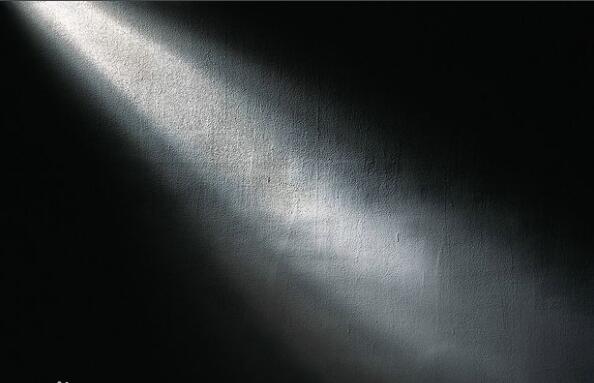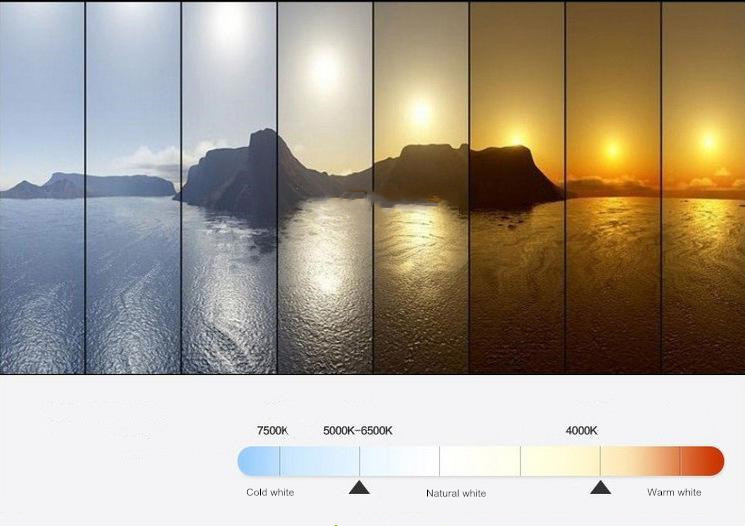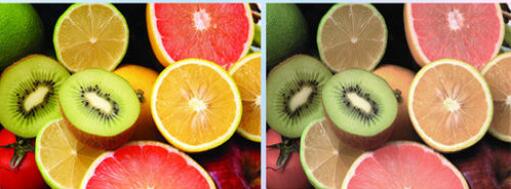1.Luminous Flux (F)
The sum of the energy emitted by the light source and received by human eyes is the luminous flux (unit: lm(lumen)). In general, the higher the power of the same type of lamp, the greater the luminous flux. For example, the luminous flux of a 40 ordinary incandescent lamp is 350-470Lm, while the luminous flux of a 40W ordinary straight tube fluorescent lamp is about 28001m, which is 6~8 times of incandescent lamp.
2.Luminous Intensity(I)
The luminous flux emitted by the light source in a unit solid angle in a given direction is called the luminous intensity of the light source in that direction, and indirectly called the luminous intensity (unit is cd (candela)), 1cd=1m/1s.

3.Illuminance(E)
The luminous flux received per unit of illuminated area is called illuminance (unit is 1x(lux), that is, 11x=1lm/m². The ground illuminance at noon with strong sunlight in summer is about 5000lx, the ground illuminance on a sunny day in winter is about 20001x, and the ground illuminance on a clear moon night is about 0.2lX.
4.Luminance (L)
The brightness of a light source in a certain direction, the unit is nt (nits), is the luminous flux emitted by the unit projected area and unit solid angle of the light source in that direction. If every object is regarded as a light source, then the brightness describes The brightness of the light source, and the illuminance just treats every object as the illuminated object. Use a wooden board to illustrate. When a certain beam of light hits a wooden board, it is called how much illuminance the board has, and how much light is reflected by the board to the human eye, it is called how much brightness the board has, that is, the brightness is equal to the illuminance multiplied by the reflectivity, in the same place in the same room, a piece of white cloth and a piece of The illuminance of the black market is the same, but the brightness is different.

5.Luminous Efficacy of Light Source
The ratio of the total luminous flux emitted by the light source to the electric power (w) consumed by the light source is called the Luminous efficiency of the light source, and the unit is lumens/watt (Lm/W)
6.Color Temperature(CCT)
When the color of the light emitted by the light source is close to the color radiated by the black body at a certain temperature, the temperature of the black body is called the color temperature (CCT) of the light source, and the unit is K. Light sources with a color temperature below 3300K have a reddish color and give people a warm feeling. When the color temperature exceeds 5300K, the color is bluish and gives people a cool feeling. Generally, light sources with a color temperature higher than 4000K are used in areas with higher temperatures. In lower places, use light sources below 4000K.
7.Color Rendering Index(Ra)
Both sunlight and incandescent lamps radiate a continuous spectrum. Objects show their true colors under the irradiation of large sunlight and incandescent lamps, but when the objects are illuminated by discontinuous spectrum gas discharge lamps, the color will have different degrees of Distortion, the degree of the light source to the true color of the object becomes the color rendering of the light source. To quantify the color rendering of the light source, the concept of color rendering index is introduced. Based on the standard light, the color rendering index is defined as 100. The color rendering index of other light sources is lower than 100. The color rendering index is expressed by Ra. The larger the value, the better the color rendering of the light source.
8.The Average Lifetime
The average life span refers to the number of hours that 50% of the lamps in a batch of lamps light up when they are damaged.
9.Economy lifetime
Economic life refers to the number of hours when the integrated beam output is reduced to a certain ratio, taking into account the damage of the bulb and the attenuation of the beam output. The ratio is 70% for outdoor light sources and 80% for indoor light sources.
10.Luminous Efficiency
The luminous efficiency of a light source refers to the ratio of the luminous flux emitted by a light source to the electric power P consumed by the light source.
11.Dazzle light
When there are extremely bright objects in the field of view, it will be visually uncomfortable, called dazzle light. dazzle light is an important factor affecting the quality of light sources.
Are you clearly now? If you have any questions, do not hesitate to contact with Liper.
Post time: Dec-03-2020












